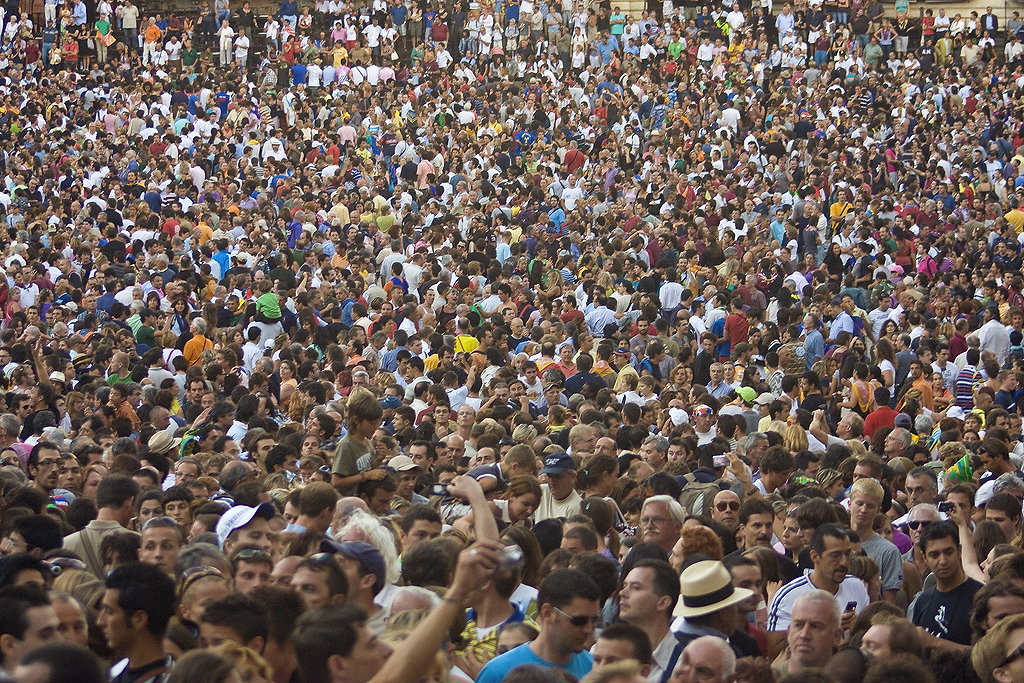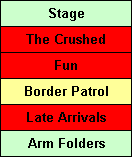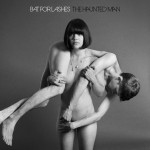Hello.
You’re probably here because you’re either never been to a venue to watch a band or artist perform live before, or have been wondering why you get called a cunt so many times whenever you do. If either of these descriptions seems to fit for you, then please read on. If not, then you’re a liar, as these are the only two categories which exist.
Firstly, let go of that guilt you carry with you to a bustling crowd. The majority of people are blissfully unaware of the majority of the things they do to annoy those around them and this includes you. The very nature of a crowd means that inevitably some people are going to have a better time of it than others, but by observing some basic rules, you can reduce your personal cunt-counter to EU regulatory levels.
So without further ado, here are some guidelines for you, you massive cunt.
Be good to people
Above all else, this is the most important point unto which all others are secondary. Tempting as it is, to engage in a debate with a fellow attendee as your favourite band launch into an emotionally charged highlight of a performance will result in everybody losing. Not just you, not just them, but those unfortunate few within earshot of your tiff will all be detached from the moment, brought crashing back to the smelly venue where they stand. The fundamental idea of having your personal space invaded is a high stress situation for many people, and regardless of whether they may be lovely people outside the walls of the venue, it is likely that this is not the case in a packed crowd. You have no control over how they behave directly, but can only passively influence them through amending your own behaviour. Everyone in attendance wishes to enjoy themselves, admittedly some draw that joy in different ways than others, but remembering this key point helps humanise your foe. If someone is in your way, move yourself. If someone is spilling their beer all over the place, move elsewhere. The alternative is an exercise of futility and frustration.
Keep talking to a minimum
Venues such as The Spitz and The Luminaire used to enforce this as a mandatory venue policy, but there are circumstances where limited chatter can be acceptable. However standing at the front row of a Magnetic Fields show loudly talking about your grandmother’s gynaecology results is a definite no-no. If you’ve got a few comments to make about the show to your friend then lean over and tell them between songs. Whilst the music’s playing, your mouth should be kept shut unless what you have to say is of absolute time criticality and should be said as succinctly as possible.
You get one photo
Unless you’ve got a photo pass and are out of sight’s way, you get a maximum of one photo you are permitted to take with your mobile or camera during the entire show. We understand that you need to post a photo on your Facebook wall to prove that you really are in attendance at the Vaccines show, and it isn’t just another one of the lies you spew out every waking day, but remember that nobody else wants to see the viewfinder blocking their view to the stage. Filming an entire song is an absolute no. You are not the aspiring documentary maker you think you are. The quality of your recording will be so bad that no-one will ever watch your recording, not even you. Strangely enough, whilst you’re watching the performance through some inferior-quality screen, the live-version of it can be experienced by tilting your head to the side. This is a little known fact to some, unfortunately. Remember, you are at an event where multiple people have played good money to see the show. Be part of it, put your smartphone away.
Don’t ask someone to move because they’re obstructing your view of the stage
It’s true, this is a very frustrating experience for everyone, but chances are, a different person will be obstructing your view at various points during the evening. Trying to fight each battle is a quick route to misery. The alignment of each individual crowd member between you and the stage at any one time is what stands in your way to see the stage. This series of people disrupts everyone, there are no height restrictions. If someone has blocked your way by standing in an empty space which you once viewed through, you are not entitled to this space and it’s time to stand elsewhere. Also remember that if you move a tall person to the side, they’re likely blocking the view of a new set of people now, all equally as entitled to a good view as you. The fundamental fact is that nobody is entitled to a view at a live show, and at any given point, multiple people will have their views obstructed. In the odd occasion where there is clearly enough space for someone to move with little disruption, then this is the one situation where asking someone politely to move is fine. Otherwise, suck it sister (or beat it, brother).
Don’t be afraid to dance
Of course not all music forms are appropriate to dancing, but often all it takes to get a crowd to loosen up and improve the experience is to see others doing it first, thus deeming it acceptable to themselves. Think about any live show you’ve been to, has the atmosphere been better when everyone stands still, stroking their beards, paying more attention to those they dislike in the crowd than what’s happening on the stage or has it been when the pretences are broken down enough to allow people to enjoy the performance for what it is? If someone’s dancing means they bump into you slightly, you have two options. Move elsewhere or start dancing. Discouraging the dancer is a selfish move. It takes a lot more balls to dad dance amongst a group of strangers than to stand there critiquing it.
If the going gets too tough, move back
You may find the actions of the audience too intense or intrusive where you’re currently standing. If you have problems with the behaviour of others, then move further back in the crowd. It has to be expected that the closer to the front you get, the more enthusiastic the attendees will be, and as a result you’ll get bumped, cajoled, knocked, pushed and perhaps even worse.
The density within the crowd is not a linear correlation with how far forward or back you are. Observe the following chart where the colours relate to the crowd density in those areas:
Stage: Where the band are.
The Crushed: Those against the barrier who got in when the doors opened and have no concerned for their own wellbeing. Inadvisable position unless you fantasise about relations with one of those on the stage.
Fun: Where the dancing / moshing / swaying, whatever happens. Not for the casual observers, though for the committed, the most enjoyable place to be.
Border Patrol: A deceptively unpopulated area surrounding the fun, looking deceptively worse from a distance than it is.
Late Arrivals: The circumference of the crowd where late arrivals bunch together thinking this is the best they are going to get. Often crowded with people who are only in attendance to say that they were.
Arm Folders: Right at the back with obscured views, but value their personal space above all else.
Sometimes you may be getting frustrated with people rushing towards the front of the crowd, perhaps as the start of the band’s best known song kicks in. Let them be. It’s unlikely their intentions are malicious, but if your stress levels perceive them so, then move to a more sedate area.
Only join in with the performance where appropriate
Clapping along during a Joanna Newsom show will win you no friends, but shouting along to Fucked Up can add to the experience. If you don’t know all of the lyrics then stay clear of singing along completely. Remember, the artist you’re watching may not be reproducing their recorded output verbatim, so there’s a chance whatever you’re singing may differ to what they end up delivering. You’re not just there to hear karaoke, so enjoy the performer’s reinterpretation of their own creation. A basic rule of thumb is if there are gang vocals or group clapping on the recording, then you’re probably safe to join in, otherwise give your vocal chords a break. The quieter the performance, the more important this rule is.
No hats, no shoulder sitting, no umbrellas
Essentially, anything that makes you arbitrarily bigger than you need to be is not welcome. Letting your short friend sit on your shoulders may be a temptation to let them see, but the sheer volume of people you will be pissing off during this action means it’s never a good idea. If it rains at an outdoor gig, you should have brought waterproofs, leave your umbrella down.
Don’t cheer while the song’s still going on
Extended outro, instant merge into another song, whatever it is, don’t succumb to the bad habit of clapping and cheering a song after the last vocal line has been delivered. You are there for the experience, not as part of a traditional ceremony.
Minimise your baggage
If there’s a cloakroom, use it. Sure it costs a bit of money, and you’ve got to queue, but those wearing backpacks are usually blissfully unaware of the damage they cause when they turn and anyone with hands full of bags is not in the best place to get dancing. There’s a good chance that anything you bring with you may be covered in beer, dropped, lost or stolen. Even better is to not bring anything in the first place. Remember, there’s no “fun” in “bags”. Apart from funbags.
Above all this, remember that every gig is a unique experience. These are just guidelines and will differ from every performance you attend and the nature of the performance will be a huge factor within that. However if everyone at least thought about these points, they’d be less likely to fall foul of a negative experience. Remember to love one another, even if the other is a cunt.






